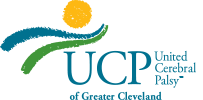February 18, 2016
by: LeafBridge Services Contributor
The Importance of Exercise
 This week’s blog was written by Rebecca Ravas, a pediatric physical therapist and manager of LeafBridge Therapy Services. Becky has been in the field for 18 years and specializes in post-operative therapies included in UCP of Greater Cleveland’s intensive therapy model, Steps to Independence. She makes sure to incorporate overall wellness and nutrition in her therapy model.
This week’s blog was written by Rebecca Ravas, a pediatric physical therapist and manager of LeafBridge Therapy Services. Becky has been in the field for 18 years and specializes in post-operative therapies included in UCP of Greater Cleveland’s intensive therapy model, Steps to Independence. She makes sure to incorporate overall wellness and nutrition in her therapy model.
The American Physical Therapy Association initiated a branding campaign around the “Move Forward” motto several years ago. Pediatric physical therapists live this mantra, encouraging infants, children and young adults to move their bodies, explore their environment and be part of their communities.
 It is well known that physical activity and exercise is beneficial to our bodies, specifically heart and lungs, brain, muscles, bones and joints and the gastrointestinal tract. Like adults, kids need regular exercise. The CDC recommends that children get 60 minutes of physical activity per day, including aerobic, strengthening and bone building, with vigorous activity three times per week. Many activities cover more than one type of exercise, and doing them regularly helps children (and adults):
It is well known that physical activity and exercise is beneficial to our bodies, specifically heart and lungs, brain, muscles, bones and joints and the gastrointestinal tract. Like adults, kids need regular exercise. The CDC recommends that children get 60 minutes of physical activity per day, including aerobic, strengthening and bone building, with vigorous activity three times per week. Many activities cover more than one type of exercise, and doing them regularly helps children (and adults):
- Feel less stressed
- Feel better about themselves
- Feel more ready to learn in school
- Keep a healthy weight
- Build and keep healthy bones, muscles and joints
- Sleep better at night
Children and adults with disabilities gain the same benefits from regular physical activity. Research studies have found that children with cerebral palsy are significantly less active than their peers, and therefore more at risk for secondary complications like contractures, decreased bone strength, decreased strength for functional skills and dependence on others for care. Many children/young adults receive regular exercise programs during weekly physical therapy (PT) and occupational therapy (OT) sessions at UCP of Greater Cleveland and are given home programs so they can continue building on what they’ve learned. But kids are not mini adults who will sit on a stationary bike or complete 10 reps of 5 exercises. Kids should exercise and have fun at the same time. Or even better, the exercise can be social and include the entire family!
How do I fit it in? Wednesday nights could be the weekly family dance party after dinner. An outdoor activity can be saved for the weekend. If you have a pet, include the child in play with the animal, such as tug of war, walking the dog and brushing the dog/cat
How can my child exercise if he or she needs help standing? The adapted equipment a child owns can be used in the home and outdoors. Many children use their gait trainers to play in an adapted baseball league, and they can also be used on the ice or a roller rink. There are stationary standers that provide strengthening and bone building if a child is actively doing something while standing, as well as dynamic standers that a child can propel indoors or outdoors. Adapted tricycles come in all sizes and are often used at school. Cycling is a great activity for milder weather, and there are organizations that will fund adapted tricycles.
Trampolines, used safely, provide bone building, vigorous activity and a much needed sensory outlet. A trip to the playground is exercise for the child and parent. Many clients participate in adapted aquatics, therapeutic riding, adapted skiing, and adapted dance classes in the Cleveland area. Some children participate in non-adapted activities like Taekwondo, yoga, recreational soccer and baseball. Many instructors can customize their classes as well. Ask your therapist(s) for ideas for your child and family.
Teenagers and young adults are facing a problem in that they are aging out of the pediatric activities/programming in the Cleveland area. UCP of Greater Cleveland therapists created a program for four clients in the summer of 2014. These were junior high to high school students who were doing well with their school work, but did not have ample opportunity to be physically active due to physical barriers in the community, manpower (parents working) and decreased knowledge in the area of fitness and wellness. They participated in UCP of Greater Cleveland’s unique Steps to Independence intensive therapy program, with the primary goal of improving physical fitness and wellness specific to their abilities. The frequency of the program was two and a half hours per day, three days per week, for four weeks. The specific strength and endurance PT and OT goals were achieved, along with functional skills, such as carrying a laundry basket upstairs independently, bed mobility and assisting with transfers. The participants reported improved quality of sleep, and parents of the participants reported increased confidence communicating with others (clear speech, improved eye contact), increased frequency of initiating movement and speed of moving, as well as increased alertness and energy level that far exceeded their baseline.
Many articles cite the physician as the health care provider to recommend exercise programs. However, pediatric physical and occupational therapists at UCP of Greater Cleveland can provide a more customized approach to exercise, looking at the child’s strength, activity level, and sensory needs.

Leave a Reply